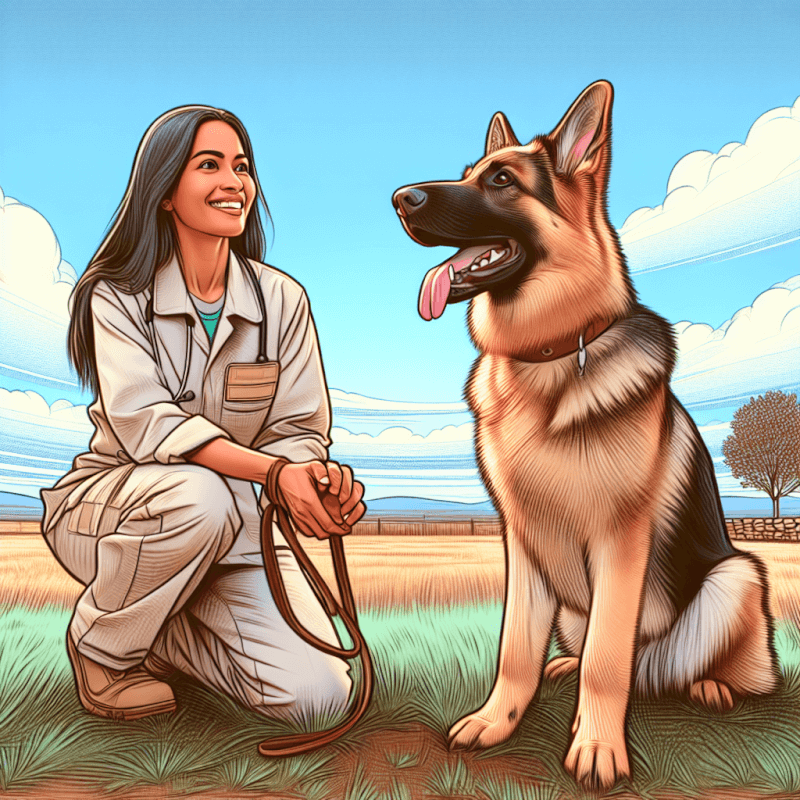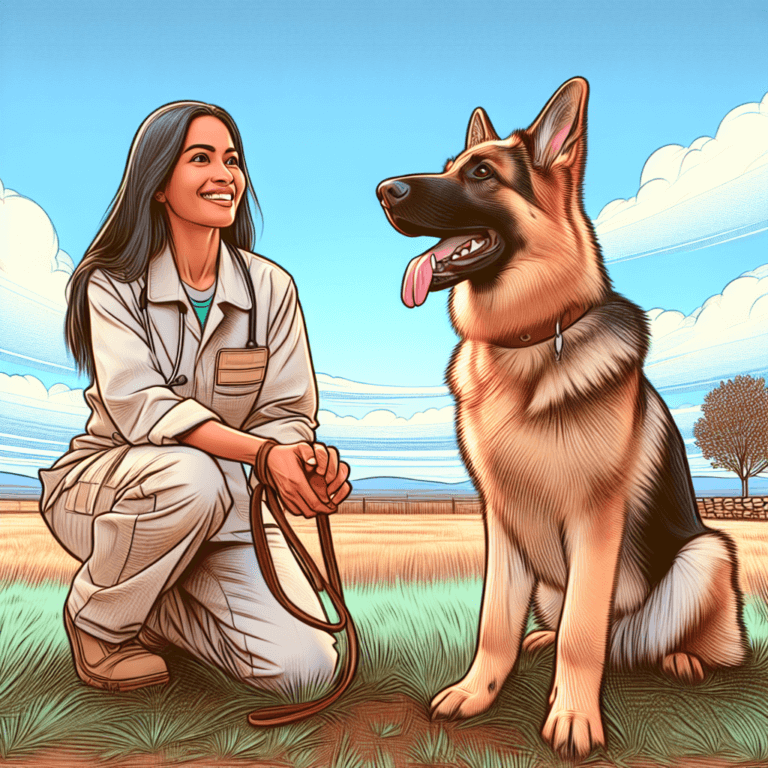Have you ever struggled with training your dog or experienced behavioral issues with your furry friend? Look no further! In this article, we will explore effective methods and techniques for dog training and delve into common behavioral issues that dogs may exhibit. Whether you’re a seasoned dog owner or a first-time pet parent, we’ve got you covered with practical tips and advice to create a harmonious and well-behaved canine companion. So, let’s embark on this exciting journey and discover how we can nurture a strong bond and tackle those training challenges together.
Understanding Dog Behavior
Importance of understanding dog behavior
Understanding dog behavior is essential for building a strong and harmonious relationship with your furry companion. Dogs communicate primarily through body language, and being able to interpret their behavior can help prevent misunderstandings and ensure a safe and happy environment for both you and your dog. By understanding why dogs act the way they do, you can address behavioral issues, provide appropriate training, and create a bond based on trust and mutual understanding.
Ready for Cat Trivia?
Test your knowledge about cats!

Types of dog behavior
Dog behavior can be categorized into various types, each serving a specific purpose. Some common types of dog behavior include:
Aggressive behavior: Dogs may display aggression as a means of protecting themselves or their territory. It is crucial to understand the underlying reasons behind their aggressive behavior and address it appropriately.
Fearful behavior: Many dogs exhibit fearful behavior in certain situations. Understanding their fears and helping them overcome them through positive reinforcement can greatly improve their quality of life.
Playful behavior: Dogs often engage in play behavior to release energy and socialize. Recognizing the difference between play and aggression is essential to ensure a safe play environment.
Pack behavior: Dogs are pack animals by nature, and as such, they exhibit certain behaviors related to hierarchy, such as dominance and submission. It is important for owners to establish themselves as the pack leader through positive reinforcement techniques.
Territorial behavior: Dogs naturally guard their territory and can display behaviors such as barking or marking to assert dominance. Understanding territorial behavior can help address any aggressive tendencies.
Common behavioral problems in dogs
While dogs can bring immense joy to our lives, they may also develop behavioral issues that can be challenging to handle. Some common behavioral problems include:
Excessive barking: Dogs may bark excessively due to boredom, fear, or seeking attention. Understanding the triggers behind their barking can help address the issue effectively.
Separation anxiety: Some dogs experience separation anxiety when left alone, leading to destructive behavior and excessive whining or barking. Proper training techniques can help alleviate separation anxiety.
Aggression towards humans or other animals: Dogs may display aggression due to fear, territoriality, or past traumatic experiences. It is important to identify and address the root causes of aggression to ensure the safety of everyone involved.
By understanding the types of dog behavior and the problems they can manifest, owners can take proactive steps to address and correct any issues that arise.
Principles of Dog Training
Positive reinforcement
Positive reinforcement is a fundamental principle of dog training. Using rewards such as treats, praise, or playtime encourages dogs to repeat desired behaviors. By associating positive experiences with specific actions, dogs learn to respond in a desirable manner. Positive reinforcement helps build trust, strengthens the bond between you and your dog, and fosters a positive learning environment.
Consistency and patience
Consistency is key when it comes to dog training. Dogs thrive on routine and predictability, so it’s important to establish consistent rules and expectations. Reinforce desired behaviors consistently and avoid rewarding or inadvertently reinforcing unwanted behaviors. Additionally, be patient with your dog during the training process. Every dog learns at its own pace, and patience will help create a stress-free training experience.
Effective communication
Clear and effective communication is essential for successful dog training. Dogs primarily rely on body language, tone of voice, and visual cues to understand and respond to commands. Use clear, concise verbal commands paired with appropriate body language to convey your expectations to your dog. Consistency in communication helps your dog understand what is expected of them and builds a strong foundation for further training.

Basic Dog Training Techniques
Housebreaking
Housebreaking, or potty training, is one of the first and most important skills to teach your dog. It involves teaching your dog to eliminate in appropriate areas outdoors or in designated indoor areas. Consistency, positive reinforcement, and establishing a routine are key to successful housebreaking. Take your dog outside frequently, reward them for eliminating in the correct area, and clean accidents indoors with products specifically designed to remove odor to discourage repeat incidents.
Leash training
Leash training is necessary to ensure an enjoyable and safe walking experience for both you and your dog. Start by introducing your dog to the concept of a leash in a positive and calm manner. Gradually build up their comfort level by taking short walks and rewarding them for walking beside you without pulling. Consistency, positive reinforcement, and patience will help your dog learn to walk politely on a leash.
Sit, Stay, and Come commands
Teaching basic obedience commands such as sit, stay, and come can greatly enhance your dog’s safety and well-being. Using positive reinforcement, break down each command into simple steps and reward your dog for successfully following the command. Consistency and patience are key to helping your dog understand and respond to these basic commands reliably.
Socialization for Dogs
Why socialization is important
Socialization is a critical aspect of a dog’s development. It involves exposing your dog to various people, animals, environments, and situations in a positive and controlled manner. Proper socialization helps dogs develop confidence, appropriate social skills, and reduces the likelihood of fear or aggression towards unfamiliar situations. Well-socialized dogs are generally more adaptable and can handle new experiences with ease.
Socialization techniques
Socialization should begin early in a dog’s life to have the greatest impact. Start by introducing your puppy to a variety of people, including children, men, women, and individuals from different races and ages. Gradually expose them to different animals, both other dogs and different species, in controlled environments. Take your dog to different locations, such as parks or busy streets, to familiarize them with various sights, sounds, and smells. Use positive reinforcement to reward calm and relaxed behavior during socialization experiences.
Dealing with fear and aggression
Some dogs may exhibit fear or aggression when faced with unfamiliar people or situations. It is important to address these issues promptly and seek professional guidance if necessary. Gradual exposure to feared situations, along with positive reinforcement and rewards for calm behavior, can help desensitize and counter-condition your dog to overcome their fears. In cases of aggression, it is essential to consult with a professional trainer or behaviorist who specializes in aggression management to ensure safety and the use of appropriate techniques.

Addressing Common Behavioral Problems
Excessive barking
Excessive barking can be disruptive and frustrating for both owners and neighbors. To address this issue, it is important to understand the underlying cause. Barking may result from boredom, fear, territorial behavior, or seeking attention. Once the cause is identified, appropriate training techniques can be used to redirect the behavior. Providing mental and physical stimulation, addressing any underlying anxiety or fear, and rewarding quiet behavior can all contribute to reducing excessive barking.
Separation anxiety
Separation anxiety can be distressing for both dogs and owners. Dogs with separation anxiety may exhibit destructive behavior, excessive barking, or attempt to escape when left alone. A gradual desensitization process, exposing the dog to short periods of separation and gradually increasing the duration, can help alleviate separation anxiety. Providing comforting toys or treats, creating a safe and den-like space, and seeking professional help if needed are all important steps to address this behavioral issue.
Aggression towards humans or other animals
Aggression towards humans or other animals is a serious issue that requires immediate attention. It is crucial to prioritize the safety of all involved and seek professional help from a trainer or behaviorist who specializes in aggression management. Understanding the root cause of the aggression, implementing behavior modification techniques, and setting clear boundaries and expectations are vital aspects of addressing aggressive behavior. Never use punishment or forceful techniques, as these may worsen the situation and compromise trust between you and your dog.
Training for Specific Behavioral Issues
Resource guarding
Resource guarding occurs when dogs display aggression or possessiveness over items such as food, toys, or even their owners. To address resource guarding, it is important to create a positive association with people approaching or interacting with the guarded item. Gradually desensitize your dog by using positive reinforcement techniques, such as trading valuable items for high-value treats. Seek professional guidance if the guarding behavior escalates or poses a risk to safety.
Jumping on people
Jumping on people is a common issue, especially in excited and energetic dogs. Consistency in training is crucial to address this behavior effectively. Teach your dog an alternative behavior, such as sitting or offering a paw, and reward them for this instead of jumping. Ignore and withhold attention when your dog jumps, rewarding them only when they exhibit the desired behavior. Reinforcing consistency among family members and visitors is important to prevent confusion and ensure your dog understands the expectations.
Chewing and destructive behavior
Dogs may exhibit destructive behavior, such as chewing furniture or personal belongings, due to boredom, anxiety, or lack of appropriate outlets for their energy. Providing mental and physical stimulation through puzzle toys, interactive play sessions, and regular exercise can help redirect their chewing behavior. Additionally, providing appropriate chew toys and gradually teaching your dog what items are off-limits reinforces desirable chewing habits.

Training for Fear and Anxiety
Identifying fear and anxiety in dogs
It is important to recognize signs of fear and anxiety in dogs to provide appropriate support and training. Common signs include trembling, panting, excessive drooling, hiding, pacing, or repetitive behaviors. If you suspect your dog is experiencing fear or anxiety, consult with a professional trainer or behaviorist who can assess the situation and create a training plan tailored to your dog’s specific needs.
Desensitization and counter-conditioning
Desensitization and counter-conditioning are effective techniques for helping dogs overcome fear and anxiety. By gradually exposing your dog to the triggers in a controlled and positive manner, you can help them build a positive association with previously fearful stimuli. Pairing the presence of feared stimuli with rewards, such as treats or favorite toys, helps create new, positive associations and reduces anxiety over time.
Professional help and medication
In severe cases of fear and anxiety, professional help may be necessary. A professional trainer or behaviorist can provide guidance and develop a comprehensive training plan to address the underlying issues. In some cases, medication may be recommended to manage anxiety levels and facilitate the training process. Always consult with a qualified veterinarian or veterinary behaviorist before considering medication as part of your dog’s treatment plan.
Preventing and Correcting Aggression
Recognizing warning signs of aggression
Knowing how to recognize warning signs of aggression can help prevent potentially dangerous situations. Common warning signs include growling, lunging, baring teeth, raised hackles, or intense staring. It is important to intervene and redirect your dog’s behavior before aggression escalates. Early recognition and professional guidance are vital to ensuring a safe environment for all.
Behavioral modification techniques
Behavioral modification techniques play a crucial role in addressing aggression. This involves creating appropriate boundaries, teaching alternative behaviors, and implementing positive reinforcement to reward calm and non-aggressive behavior. Consistency, patience, and professional guidance are key components of effective behavioral modification.
Safety precautions
When dealing with aggression, prioritizing safety is essential. Ensure the safety of yourself, others, and your dog by using techniques taught by professionals, such as the use of a muzzle or extensive management protocols. Understanding your dog’s triggers and avoiding potentially dangerous situations can also minimize the risk of aggressive incidents. Seeking professional help is strongly advised to create a safe and effective behavior modification plan for aggressive behavior.

Positive Reinforcement vs. Punishment
Benefits of positive reinforcement
Positive reinforcement is widely recognized as the most effective and humane method of training dogs. It strengthens the bond between you and your dog, encourages desired behavior without negative consequences, and builds trust and confidence. By rewarding your dog for good behavior, you motivate them to repeat those behaviors and create a positive learning experience.
Negative effects of punishment
Punishment, such as physical or verbal reprimands, can have negative effects on a dog’s behavior and overall well-being. It can lead to fear, anxiety, and even aggression in some cases. Punishment-based training methods may suppress unwanted behavior temporarily, but they do not address the underlying cause and can damage the trust and relationship between you and your dog.
Balancing techniques
While positive reinforcement is the cornerstone of effective dog training, there may be instances where additional techniques need to be used to address specific behaviors. In such cases, it is important to prioritize methods that are based on promoting positive behavior and avoiding any form of physical punishment or negative reinforcement. Balancing techniques should always be carried out with professional guidance to ensure the most effective and ethical approach.
Seeking Professional Help
When to consult a professional trainer or behaviorist
Consulting a professional trainer or behaviorist is advisable in the following situations:
Serious aggression: If your dog displays frequent and intense aggression towards humans or other animals, seeking professional help is crucial to ensure the safety of everyone involved.
Persistent behavior issues: If your dog’s behavioral issues do not improve or continue to worsen despite your efforts, a professional’s expertise can provide guidance on resolving the problems effectively.
Fear and anxiety: If your dog shows signs of severe fear or anxiety that impact their daily life or well-being, a professional can create a tailored training plan to help manage and alleviate these issues.
Finding a qualified trainer or behaviorist
When searching for a qualified trainer or behaviorist, consider the following factors:
Credentials and experience: Look for professionals who have relevant certifications and experience in dog training and behavior modification. They should have a solid understanding of the principles of positive reinforcement and humane training techniques.
Positive training methods: Ensure that the trainer or behaviorist uses positive reinforcement methods and avoids any form of punishment or aversive training techniques.
Reputation and reviews: Research feedback and reviews from previous clients to get an idea of the professional’s reputation and success rate.
Cost and commitment of professional training
The cost of professional training can vary depending on the location, expertise, and specific needs of your dog. It is important to consider the long-term commitment required for addressing behavioral issues effectively. While the cost may seem significant initially, professional guidance can save you time and frustration in the long run, leading to a healthier and more well-adjusted dog.
Understanding dog behavior and implementing appropriate training techniques are key to addressing behavioral issues, fostering a strong bond, and promoting a positive environment for both you and your beloved canine companion. By investing time, patience, and consistency, you can ensure a fulfilling and rewarding relationship with your dog throughout their life.



